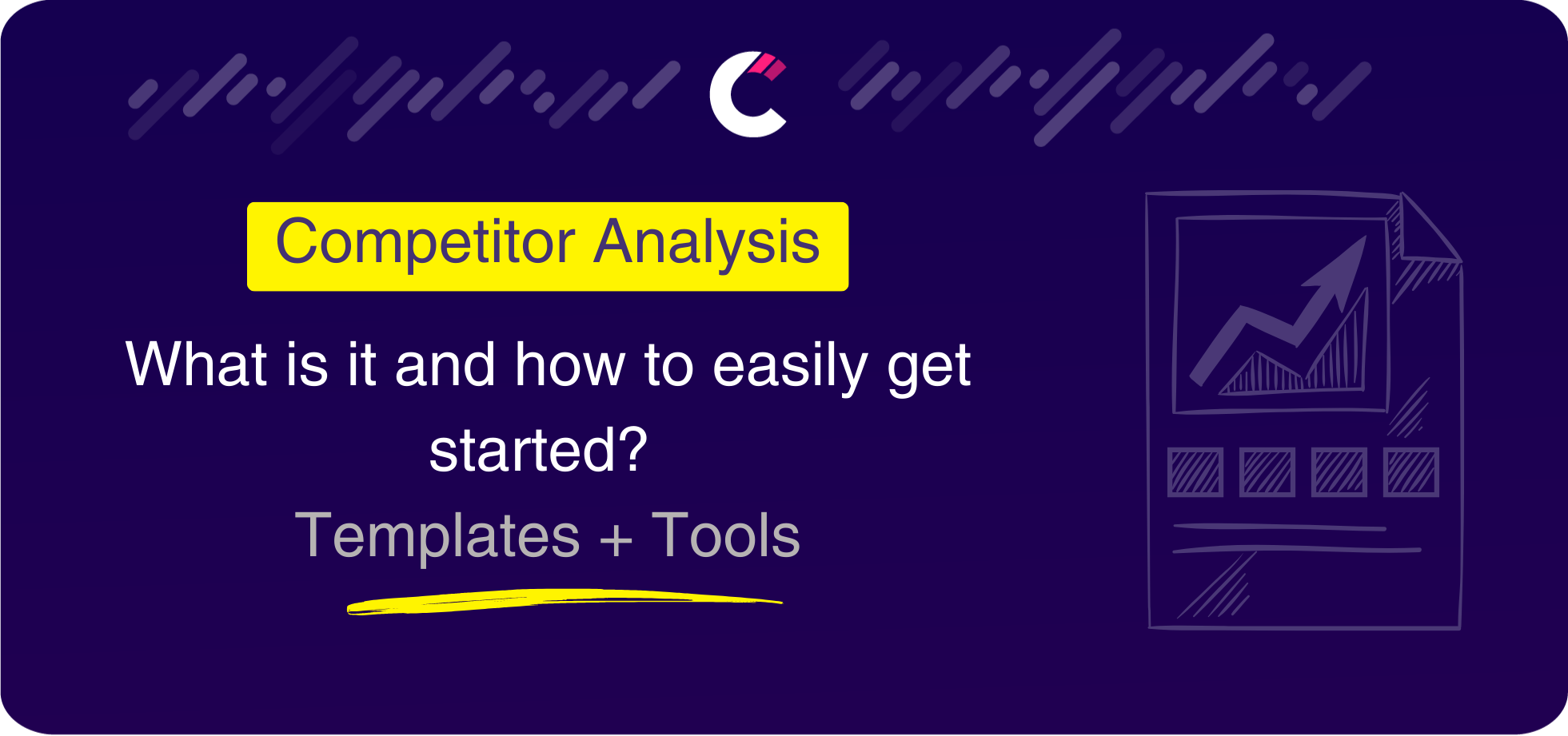
Competition is fierce out there, right? You’re not alone in thinking so. A surprising 60% of businesses are turning to competitor analysis to get an edge. This guide is your roadmap to understanding competitor analysis—what it is, why it matters, and how to do it effectively, with handy templates and tools included. Ready to outsmart your competition?
So what’s all the buzz about competitive analysis? Competitive analysis, sometimes called competitive research, is your secret weapon for understanding the battlefield that is your industry. It’s not just about knowing who your competitors are but diving deep into their operations. You’re looking at their marketing moves, customer reviews, and even the nitty-gritty details like their pricing strategies. Ever wondered how Brand X is killing it with their new product? A competitive analysis can give you those answers.
This isn’t a one-size-fits-all process. You can go broad, looking at the overall market landscape, or get super specific, like dissecting a competitor’s social media campaign. The goal? To find your own company’s strengths and weaknesses and see how they stack up against the competition. It’s like doing a SWOT analysis but for the entire neighborhood, not just your own house.
So, whether you’re trying to understand your industry better, find different types of competitors, or even reevaluate your current marketing strategy, competitive analysis gives you the benchmarks and insights you need. Ready to play detective?

Firstly, it's essential to examine the financial and operational metrics of your competitors. This includes profitability, market share, and growth rates. Look at public financial reports, industry reports, or LinkedIn to gauge metrics like profitability, funding, and growth rates.

For product analysis, start by making a list of competitor products and their features. Use customer reviews and feedback to assess quality and performance. If possible, purchase the product yourself for a hands-on evaluation. Take note of what sets popular products apart.

To understand customer base and market awareness, monitor social media channels, customer reviews, and public surveys. Use tools like Google Trends or social listening platforms to gauge public awareness and sentiment. Pay attention to the demographics they are targeting and how effectively they are engaging their audience.

Lastly, evaluate marketing strategies by subscribing to competitors' newsletters, following them on social media, and tracking their advertising campaigns. Use tools like SEMrush or Ahrefs to analyze their SEO and PPC strategies. This will give you a clearer picture of their marketing reach and effectiveness.
You might be wondering, “Is competitive analysis really worth my time?”. We definitely think so.
Competitive analysis isn’t a magic wand, but it is a valuable tool. It helps you identify opportunities and threats in your market landscape, enabling you to make decisions that are not just reactive to what your competitors are doing, but also proactive in shaping your own path. In a business environment where knowledge is power, competitive analysis offers you a way to gather that crucial information.
Now that we’ve touched on the ‘why,’ let’s explore the specific benefits this practice can offer.

Whether you’re a small business owner wearing multiple hats or a marketer in a larger organization, the importance of competitive analysis can’t be overstated.
Here’s why it should be on your radar:

The frequency of your competitive analysis will depend on various factors, such as the volatility of your industry and the resources you have at hand. For small business owners, a quarterly review might suffice to keep tabs on local competitors. On the other hand, marketers in fast-paced industries like tech or fashion might find monthly or even weekly analyses more beneficial. The key is to make it a regular part of your business strategy. It’s not a “set it and forget it” kind of task. Market conditions change, new competitors emerge, and consumer preferences evolve. Regular competitive analysis allows you to adapt and pivot, ensuring you’re not left behind.
Identifying who your competitors are is the foundational step in any competitive analysis. Doing it wrong can lead to misguided strategies, wasted resources, and missed opportunities.
Here’s a guide on how to get it right and who to track as your competitor:
Direct and Indirect Competitors: Start by listing businesses that offer similar products or services. These are your direct competitors. Also, consider companies whose products or services could substitute yours; these are your indirect competitors.
Online Search: A simple Google search can reveal a lot. Use keywords related to your industry to find businesses that appear in search results.
Industry Publications and Reports: These can provide insights into market leaders, emerging players, and even potential disruptors in your industry.
Customer Feedback: Listen to your customers. They often compare you to your competitors and can provide valuable insights.
Social Media and Forums: Platforms like LinkedIn, Reddit, or industry-specific forums are good places to find discussions about competitors.
Competitors Finder Tool: Tools like Competitors Finder can automate this process, providing you with a list of competitors based on your industry and other parameters.
By using a combination of these methods and tools, you’ll get a well-rounded view of who your competitors are, setting the stage for a more in-depth analysis.
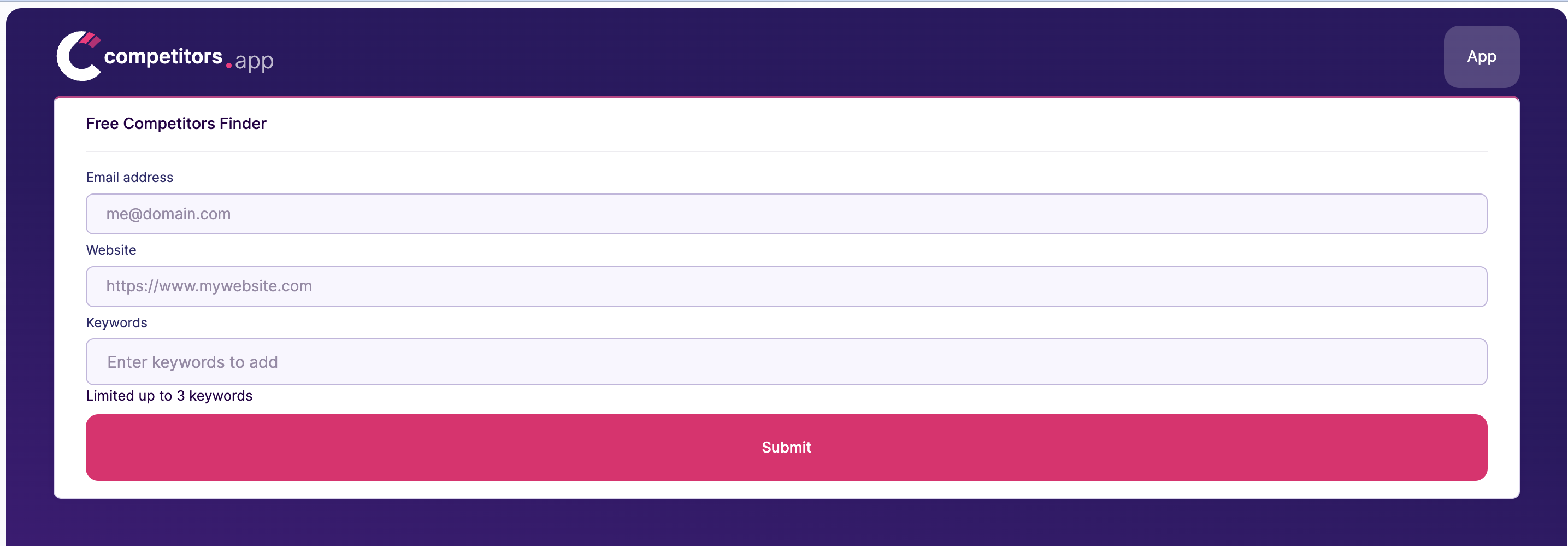
Use the Competitors App Competitor Finder to identify who you're up against in the market.
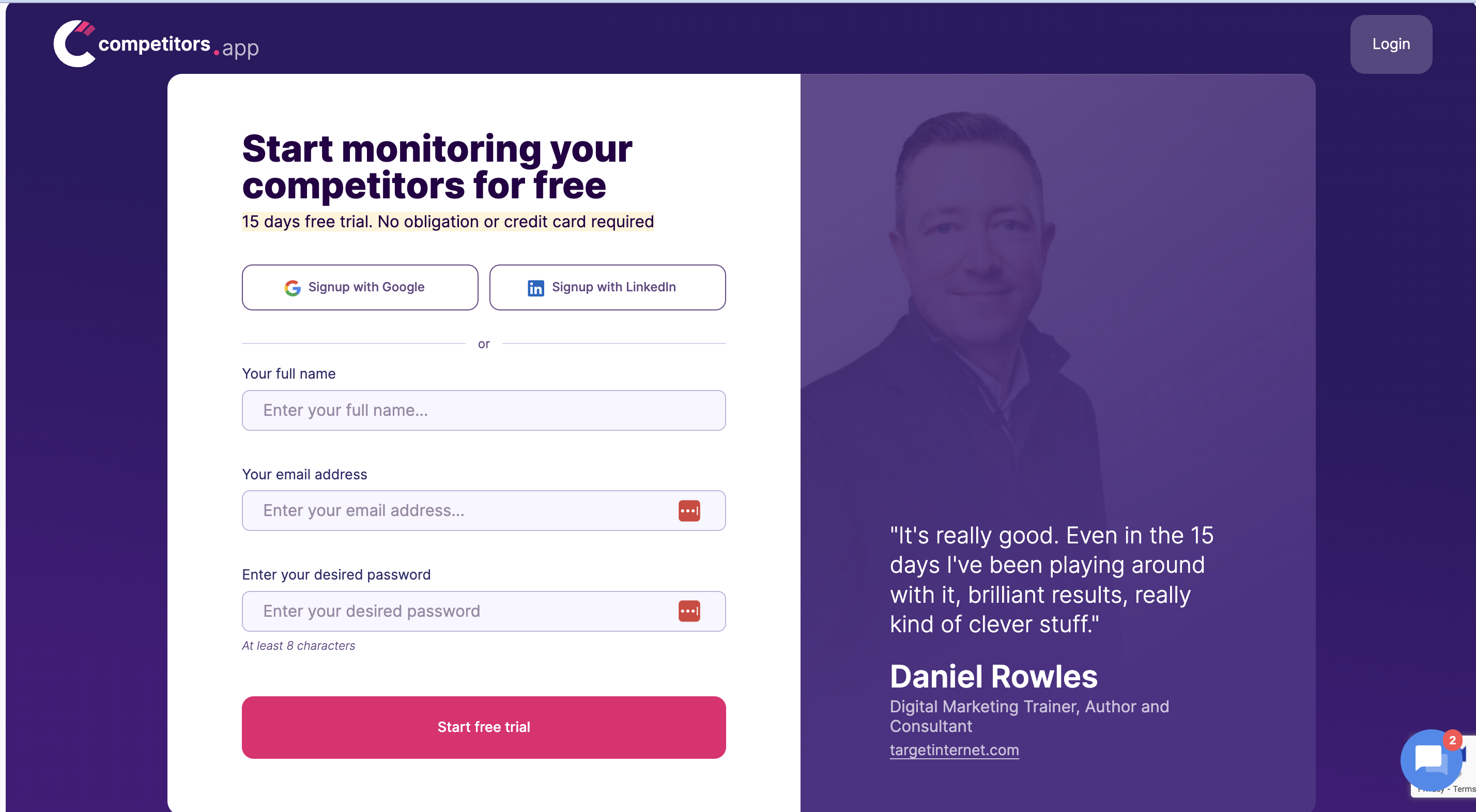
Sign up for a Competitors App Free trial account to unlock a wealth of features designed to give you an edge.
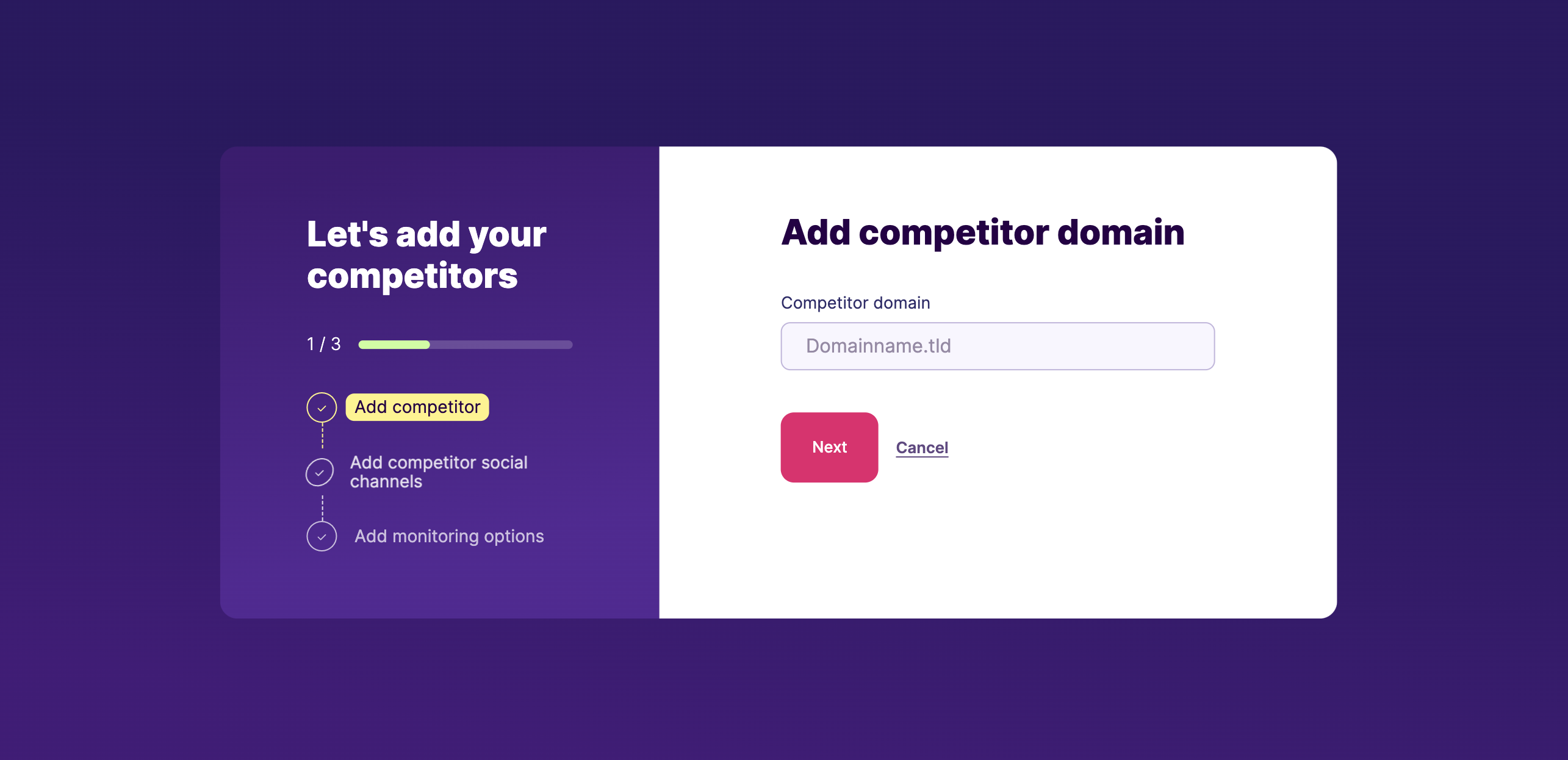
Add your competitor domain on the field. Competitors app will automatically detect their social media, most important website pages, and reviews
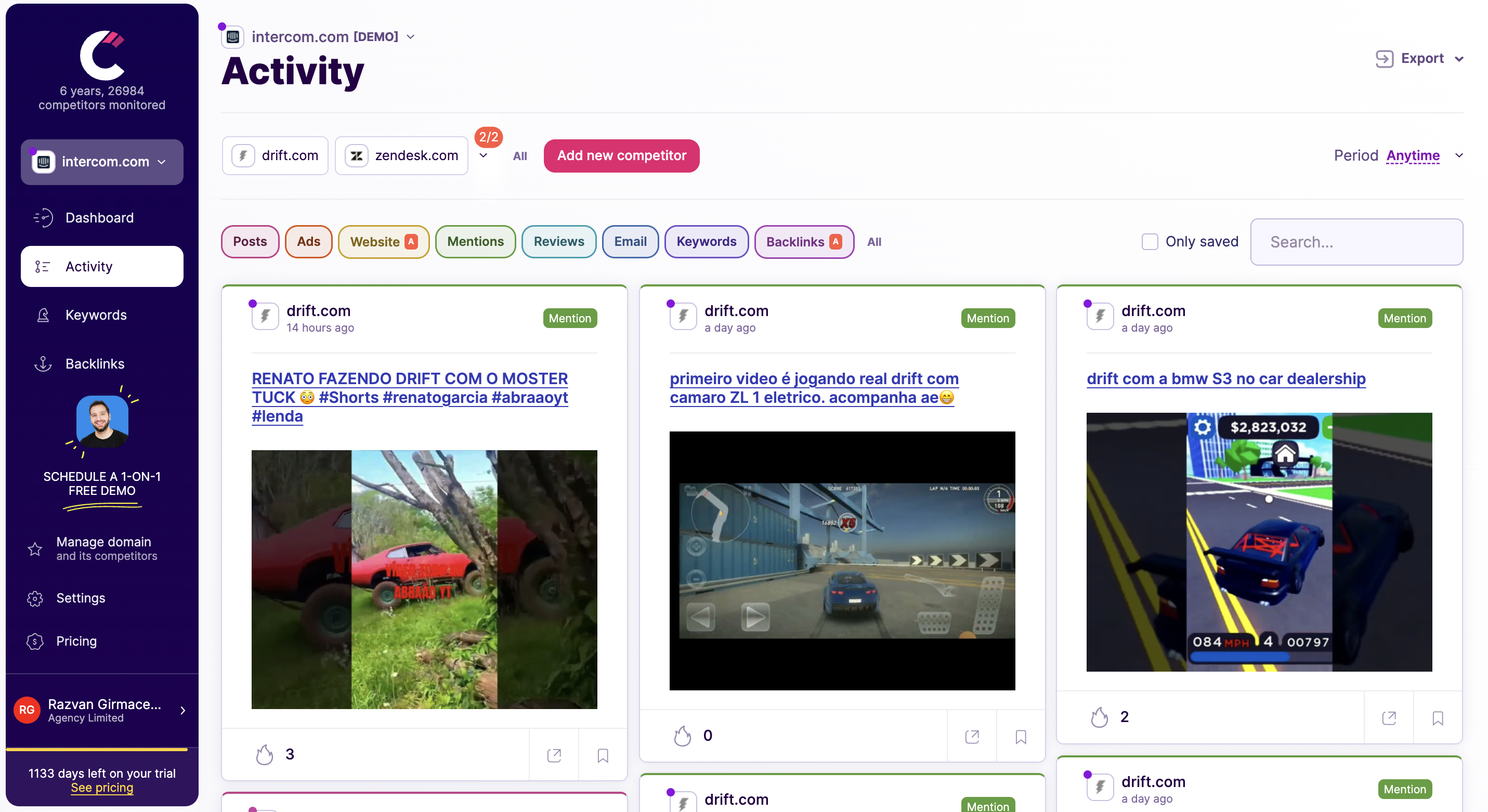
Start diving into the historical activity of your competitors. This will give you a clearer picture of their past strategies and performance metrics. At the same time keep an eye for new updates.
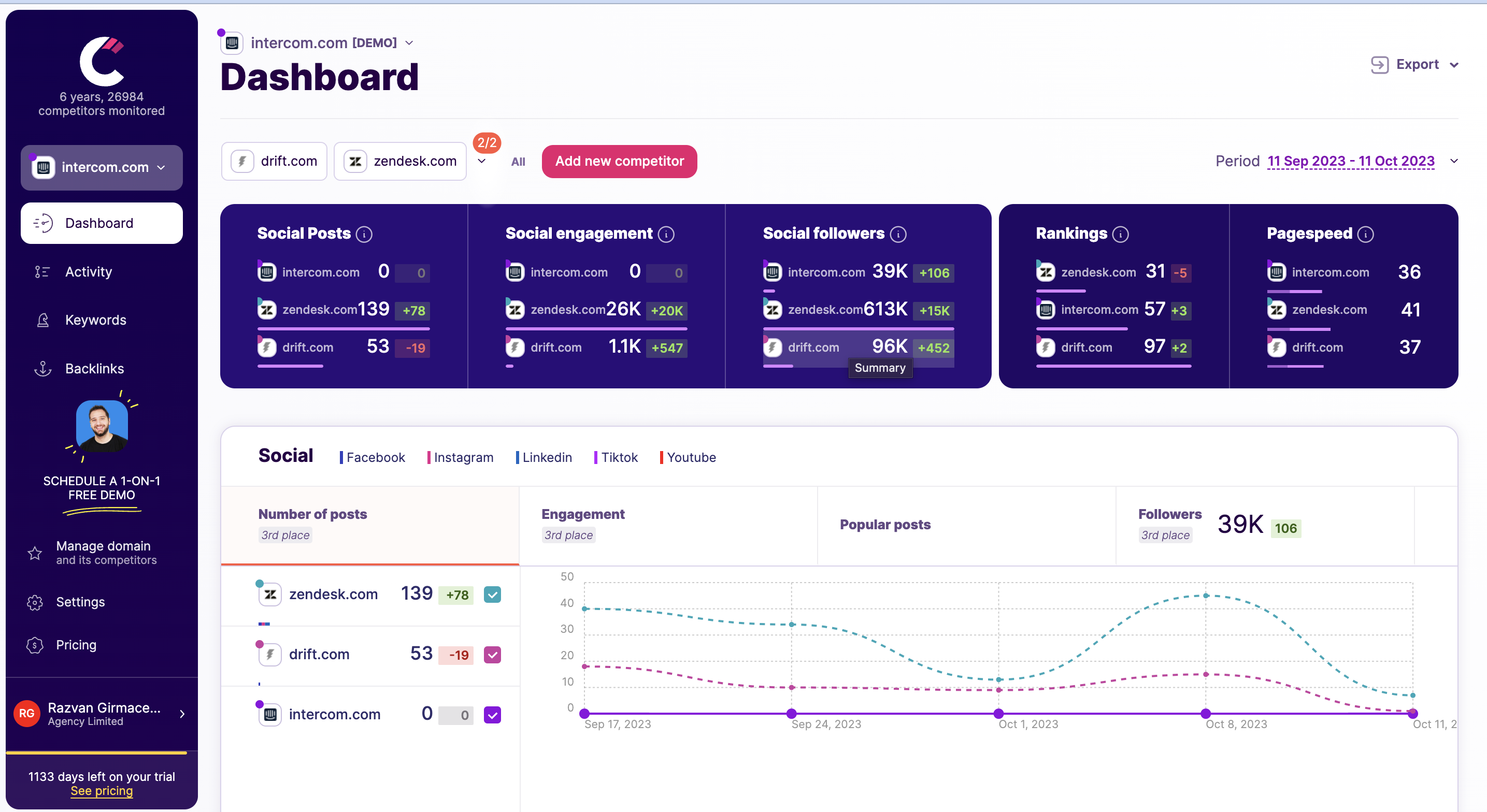
Use Competitors App Dashboard and the data you've collected to benchmark your company against the competition. This will help you identify your strengths and weaknesses in the market.
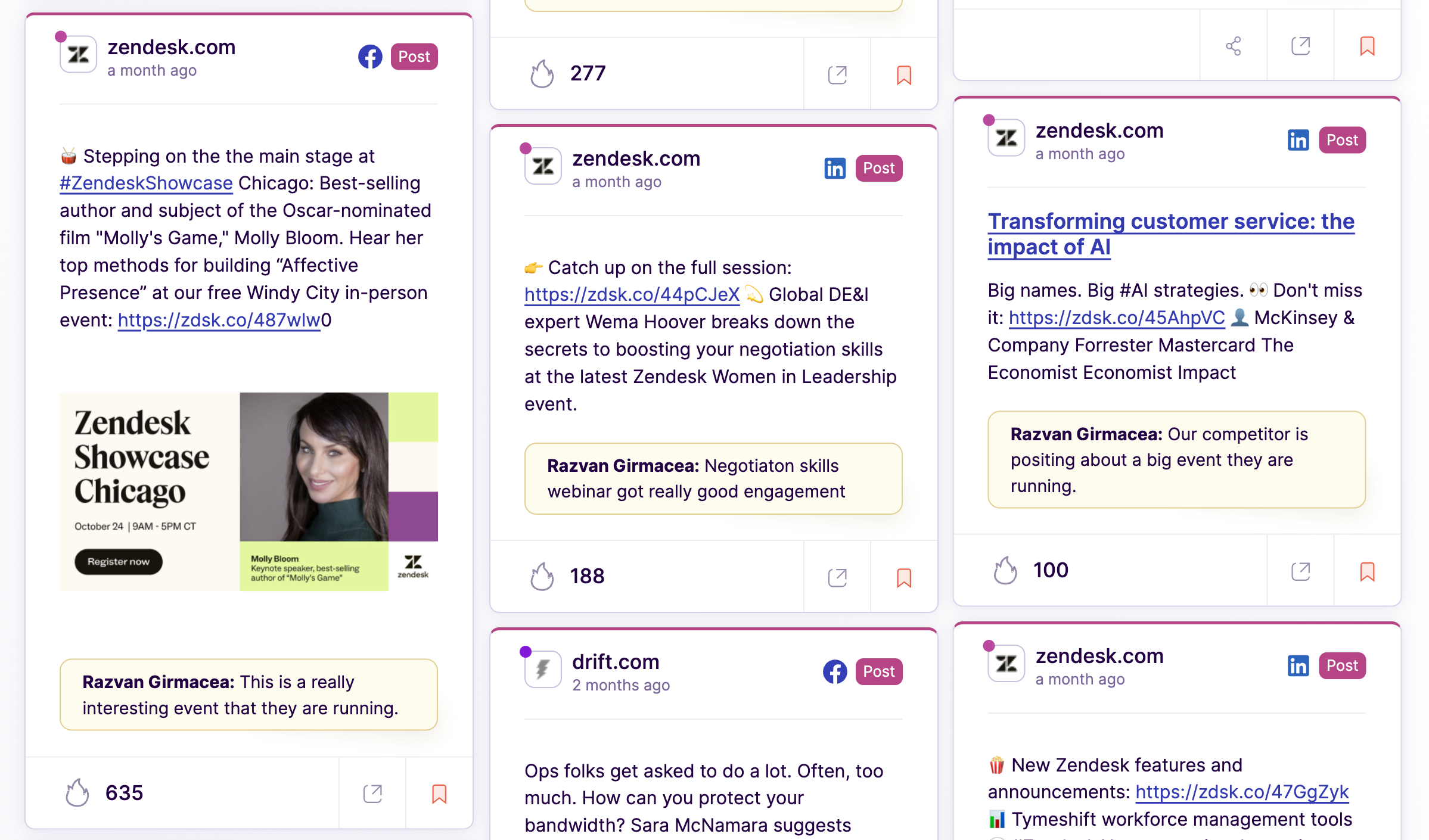
Finally, utilize one of our competitor analysis templates to compile all your findings into a comprehensive report. Share this with your team. It's important to add actionable tips at the end of the page.

Want to dive into competitive analysis but don’t know where to start? We’ve got you covered, our template library covers all the major processes you need to get your competitive function running smoothly.
Access the template for competitive analysis from here. For more templates, you can access our blog which includes 15 competitor analysis templates.
Competitive analysis is not an easy task. Instead, it’s a multifaceted approach that requires a deep understanding of various techniques and the right timing for each. Setting the techniques wrong could set you up for multiple hours of work without output. To save you time we collected our favorite techniques below:


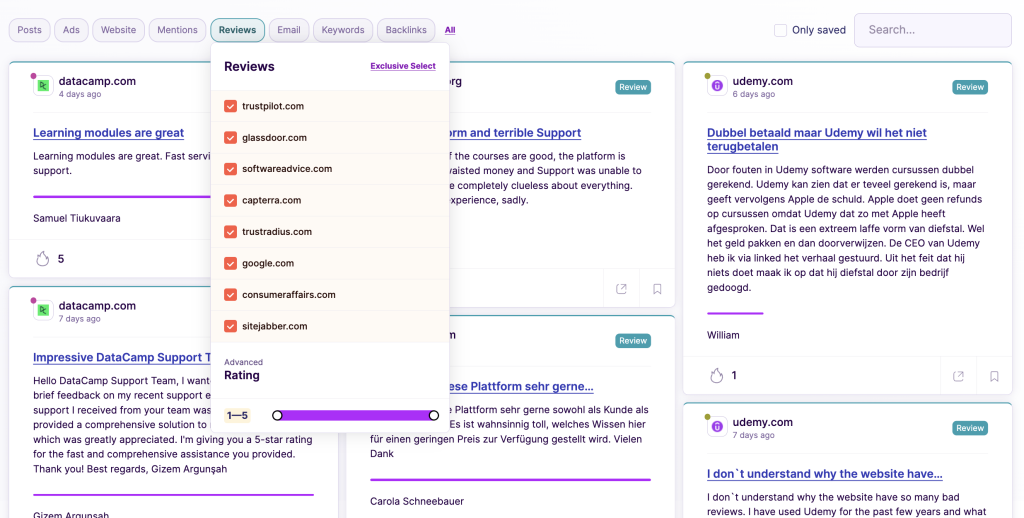
Apart from these techniques, there are multiple other methods like market segmentation analysis, pricing analysis, and feature comparison. To learn more about these and other techniques, check out our blog post, “15+ Techniques for Comprehensive Competitive Analysis.”
When it comes to competitor analysis, having the right tools at your disposal can make all the difference. These tools empower you to gain valuable insights into your competitors’ strategies and stay ahead in the game. To explore a comprehensive list of competitive analysis tools and learn how to use them effectively, visit our dedicated article on Competitive Analysis Tools. Whether you’re tracking SEO, social media, PPC, or more, these tools are your key to success in the competitive landscape.
Understanding your competitors’ online strategies is more important than ever. This isn’t just about who has the flashiest website; it’s about how effectively they’re using various digital channels. Here are the key pillars to consider:

Examine your competitors' social media presence. What platforms are they on? How often do they post? What's the engagement like?
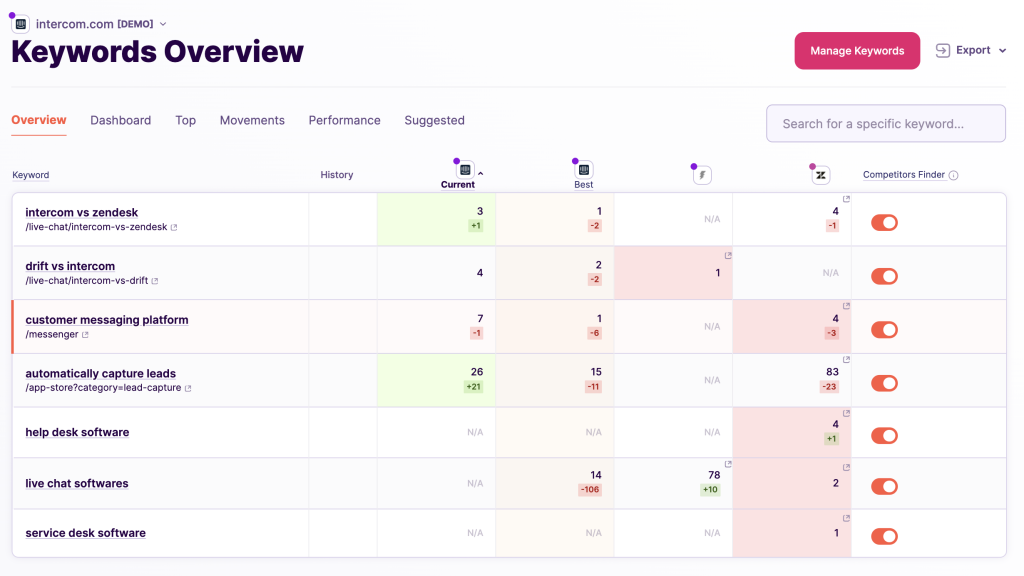
Look into how your competitors are performing in search engine rankings. What keywords are they targeting? How well are they ranking for those keywords?
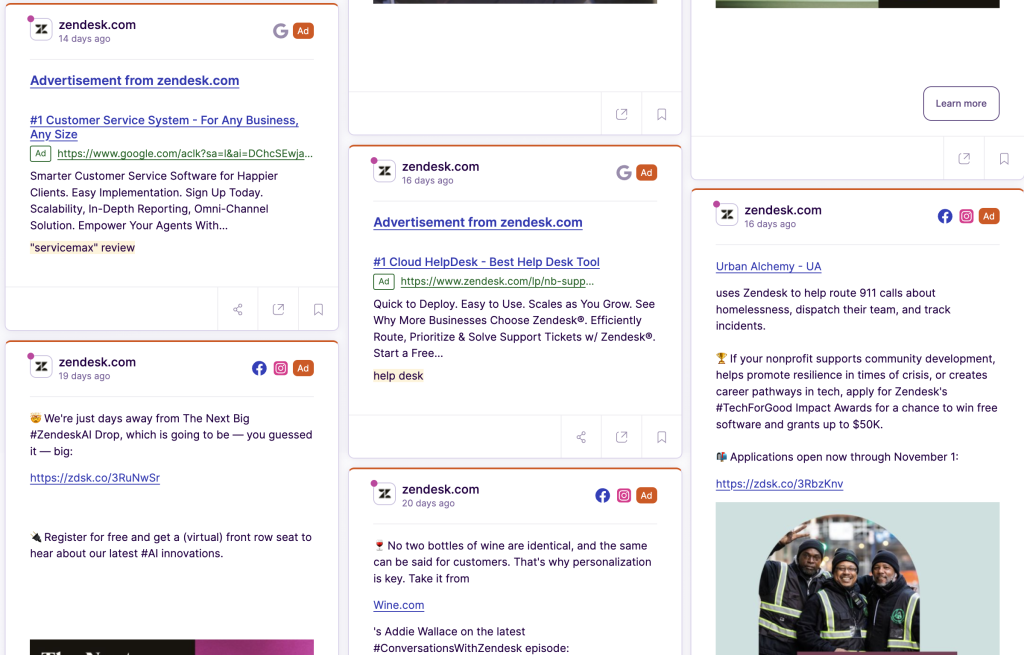
Pay attention to your competitors' paid advertising strategies. Are they running Google Ads, LinkedIn Ads, or social media ads? What keywords are they bidding on and who do they target?
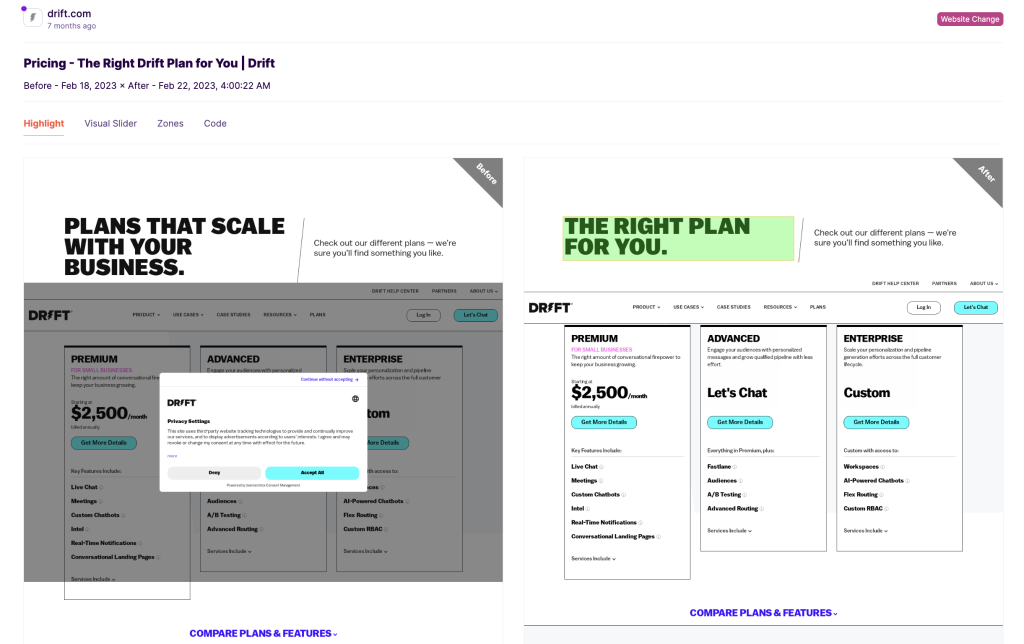
Monitor your competitors' websites. What is their website speed? What changes are they making to their website? Do they have a blog or other content that adds value?
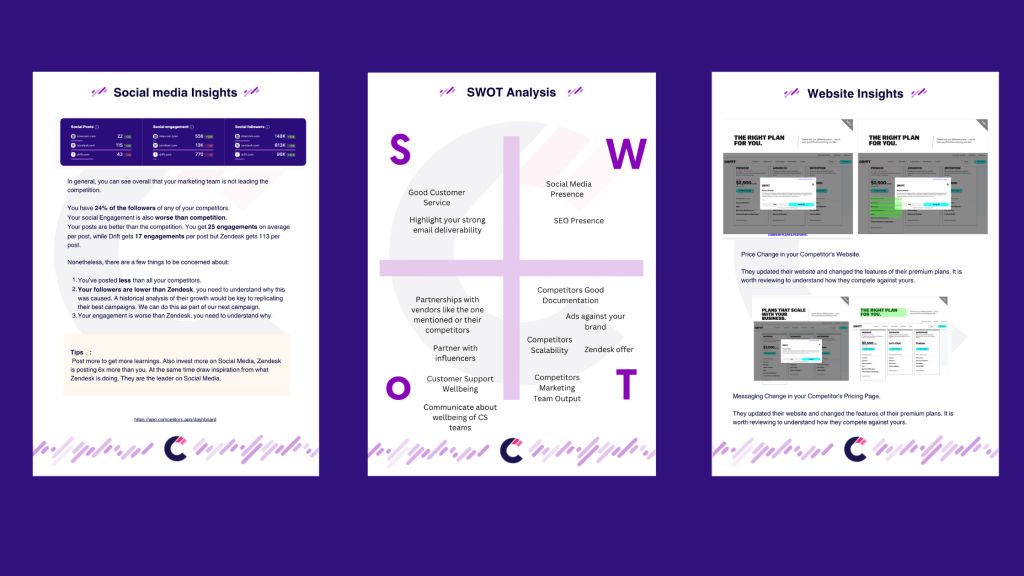
Suppose you’re part of a burgeoning startup that offers digital marketing services tailored for local bakeries. You recognize the need to understand your competitive landscape better, so you embark on a competitive analysis journey. Here’s a step-by-step breakdown:
Step 1: Start by identifying your competitors. A quick Google search for “digital marketing for local bakeries” can give you a list of companies to consider.
Step 2: Dive into their online presence. Examine their websites, customer testimonials, and service offerings. Use tools like Competitors App to get a sense of their SEO strategies.
Step 3: Analyze your own company’s strengths and weaknesses through a SWOT analysis. This will help you understand where you stand in comparison to your competitors.
Step 4: Map out the competitive landscape. Use the data you’ve gathered to identify gaps in the market or areas where your competitors are outperforming you.
By following this approach, you’ll not only identify your key competitors but also discover actionable insights that can help you refine your own strategy. For more competitive examples, follow our blog competitive analysis examples.
Competitive analysis allows you to understand your market better, identify gaps in your strategy, and discover opportunities to outperform your competition.
There's no hard and fast rule, but it's generally good to conduct a competitive analysis at least once a year, or when you're considering a major business pivot.
No, SWOT analysis is a component of competitive analysis that focuses on your own company's Strengths, Weaknesses, Opportunities, and Threats. Competitive analysis is broader and includes evaluating your competitors as well.
Competitive analysis is performed by collecting data on your competitors and evaluating their strategies, strengths, and weaknesses. Tools like Competitors App can streamline this process.
There are various types, including digital competitive analysis, product competitive analysis, and customer experience analysis, among others.
The main objectives are to understand your competitors' strategies, identify market gaps, and find opportunities to gain a competitive edge.